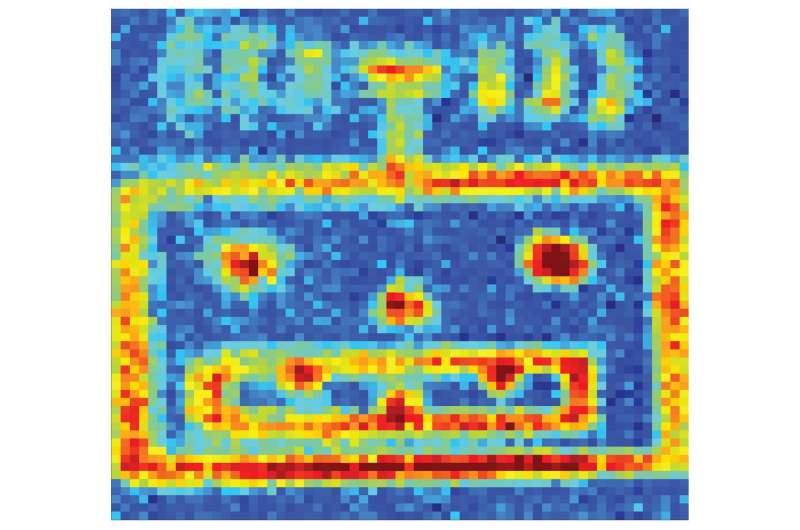June 6, 2016 report
New technique doubles resolution of near-field terahertz imaging

(Phys.org)—A team of researchers with members from the University of Exeter, the University of Glasgow and QinetiQ, all in the U.K. has found a way to effectively double the resolution offered by near-field terahertz imaging. In their paper published in the journal Science Advances, the team describes how the technique works and some of the applications that might be bettered through its use.
Techniques involving the use of terahertz radiation have been evolving in recent years, leading to devices able to see through materials to take pictures of what lies beneath. Because T-rays are less energetic than X-ray or gamma rays, they are less likely to cause damage. That has made them ideal for use in detecting hidden images behind paintings and discovering defects in panels used on space craft. But there have been two problems with using T-rays more widely, the first is that it costs a lot, and the second is that it cannot be used in applications smaller than its wavelength, which has held back its resolution abilities. In this new effort, the researchers have not found a solution for the first problem but have dramatically improved the second.
To improve the resolution, the team illuminated an object hidden behind a silicon wafer with two different sources, one of them was a standard terahertz beam, and the other was light that sent pulses of different dark and light patterns onto the object under study. The patterns that were projected onto the wafer caused part of it to become conductive, which meant the T-rays could not pass through them. Thus the T-rays were able to easily pass through the wafer but were then scattered as they struck the object hidden on the other side. Using a pixel detector allowed for recording the T-rays that made their way through, allowing for image creation.
Using the technique, the researchers report that they were able to detect cracks in a circuit board affixed to the opposite side of a wafer, at approximately double the resolution of existing terahertz imaging techniques. They believe their technique could prove useful in the microelectronics industry, and perhaps in medicine, as it might be used to detect very tiny tumors.
More information: R. I. Stantchev et al. Noninvasive, near-field terahertz imaging of hidden objects using a single-pixel detector, Science Advances (2016). DOI: 10.1126/sciadv.1600190
Abstract
Terahertz (THz) imaging can see through otherwise opaque materials. However, because of the long wavelengths of THz radiation (λ = 400 μm at 0.75 THz), far-field THz imaging techniques suffer from low resolution compared to visible wavelengths. We demonstrate noninvasive, near-field THz imaging with subwavelength resolution. We project a time-varying, intense (>100 μJ/cm2) optical pattern onto a silicon wafer, which spatially modulates the transmission of synchronous pulse of THz radiation. An unknown object is placed on the hidden side of the silicon, and the far-field THz transmission corresponding to each mask is recorded by a single-element detector. Knowledge of the patterns and of the corresponding detector signal are combined to give an image of the object. Using this technique, we image a printed circuit board on the underside of a 115-μm-thick silicon wafer with ~100-μm (λ/4) resolution. With subwavelength resolution and the inherent sensitivity to local conductivity, it is possible to detect fissures in the circuitry wiring of a few micrometers in size. THz imaging systems of this type will have other uses too, where noninvasive measurement or imaging of concealed structures is necessary, such as in semiconductor manufacturing or in ex vivo bioimaging.
Journal information: Science Advances
© 2016 Tech Xplore


















